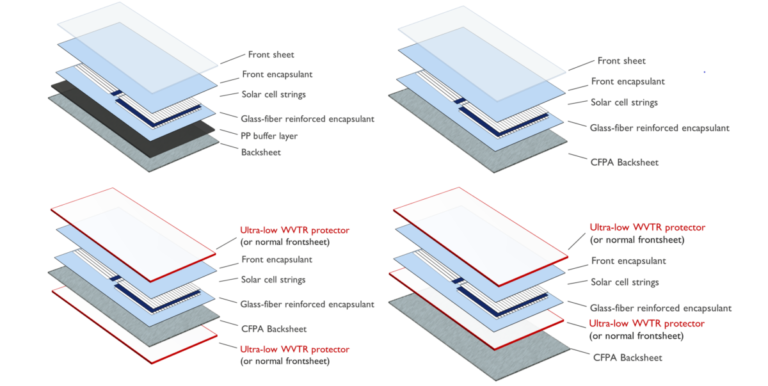A European research team has investigated interconnection and encapsulation strategies to improve the moist heat and mechanical resilience of vehicle-integrated photovoltaic (VIPV) modules, finding that carbon fiber-reinforced plastics hold promise.
To increase the driving range of electric vehicles, research groups are investigating the integration of solar cells on the roof, hood, trunk and side panels of the vehicle. But such vehicle-integrated photovoltaic (VIPV) applications will require new, lighter modules, based on a deep understanding of potential failure mechanisms and resilient module designs.
A European research team has reported some progress toward that goal after investigating interconnection and encapsulation strategies to improve the reliability of VIPV modules against moist heat and mechanical shock.
“When developing lightweight PV modules with high reliability, the mechanical properties of the parts list used turned out to be crucial. We screened several composites and found that carbon fiber reinforced plastics are promising,” said the study’s corresponding author, Bin Luo. pv magazine. “The most challenging aspect was understanding the different degradation/failure mechanisms when using different materials.”
The team fabricated lightweight mini-modules weighing approximately 3.45 kg/m2. The selected backing sheets are reinforced with fiberglass polypropylene or carbon fiber polypropylene. The backing encapsulant was made of polyolefin elastomer (POE) reinforced with randomly oriented short glass fibers at a weight ratio of 8.2%. Multi-wire connected heterojunction cell strings, a thermoplastic polyolefin (TPO) contact foil, a front encapsulant made of polyolefin elastomer (POE), and a polyethylene terephthalate faceplate completed the device structure.
The team then conducted moist heat and mechanical impact tests, which revealed defects such as cracks in the solar cell, delamination of modules and micro-cracks in the backplates. These were then analyzed to arrive at a new bill of materials that included fiber reinforcement in the back layer and a thicker encapsulation film on the front.
Using a backplate with higher bending stiffness can reduce global bending, which reduces shear stresses and can therefore prevent cell cracking, the team explains. As for moist heat resistance, which depends on the water vapor permeability of materials in the module stack, the team has tackled this front and back.
The result was a design with carbon fiber polyamide base plates and new low-moisture transmission layers in the module. The design decisions increased weight to 5.21 kg/m2 and increased costs, but the strategy enabled greater resilience against previously observed failure modes.
In discussing the use of non-traditional materials to provide module protection and reliability, the team noted the trade-offs between weight and cost. “Further testing and cost optimization are needed to bring this to market,” Luo said.
The research is described in “Encapsulation strategies for mechanical impact and moist heat reliability improvement of lightweight photovoltaic modules towards vehicle integrated applications,” published in Solar energy materials and solar cells. The researchers came from Belgium’s KU Leuven, IMEC, Hasselt University and EnergyVille, plus the Swiss Ecole Polytechnique Fédérale de Lausanne (EPFL) and the Austrian Research Institute for Chemistry and Technology.
Looking ahead to future research topics, the team sees a need for combined reliability testing, including hail impacts, thermal cycling and wet heat testing, in combination with statistical analysis. More testing of curved, lightweight PV modules in a larger size is also needed.
Luo elaborated on future research prospects when he said: “We want to build on our understanding of the failure mechanisms in different lightweight PV structures and the relationship with material properties under different stress conditions relevant to PV in general, but also specifically to various integrated PV applications.”
This content is copyrighted and may not be reused. If you would like to collaborate with us and reuse some of our content, please contact: editors@pv-magazine.com.


